Walking off the “Nose” 17th at the Course at Yale, a glance to the left brings the feel of staring at Goliath in the face. Intimidation is the first thing that enters the player’s mind.
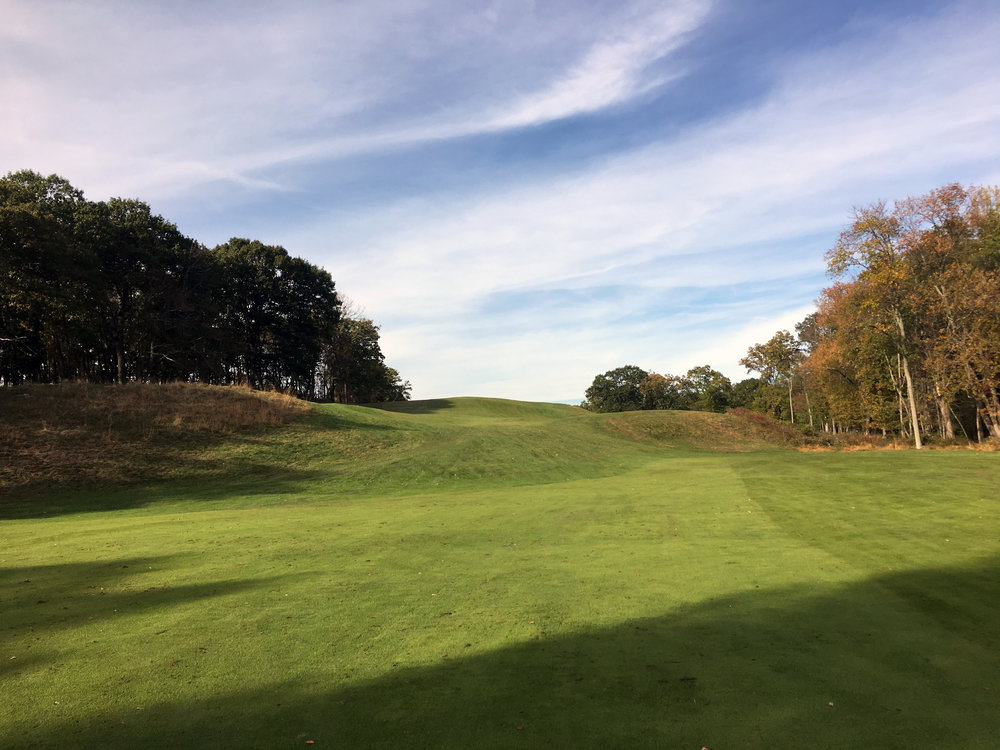
One way to describe the “Home” hole at Yale is polarizing. The par-5 measures 610 yards from the Raynor tees and treks through three massive mounds. After mounting a hill about 70 feet tall the hole is a rollercoaster ride down to the behemoth green. The scale of the 18th green makes the 17 previous greens which average 10,000 square feet seem small.
Some experts condemn Yale’s 18th and believe it’s a product of architects Seth Raynor and C.B. Macdonald running out of dynamite. Others believe it’s one of the greatest long par 5’s in golf…I find myself in the latter category.
One of the most difficult tasks in golf course architecture is to deliver an interesting long par-5. The 18th at Yale is a labyrinth of options and strategic interest. For 610 yards, MacDonald and Raynor ask players to hit bold shot after bold shot to navigate the brute finisher. MacRaynor associate Charles Banks described the “Home” at Yale the best…
“This is the long fellow. To relieve the tedium of the drag through a long hole where distance is the only commendation, this hole has been broken up into three distinct parts with an option of still another line of play after the first shot.”
-Charles Banks
Off the tee
The tee shot on 18 showcases the massive scale and presents players with their first option: take on the hill on the right or play safely up the left. The bold line over the center of the mound yields a far superior lie and angle for the second.
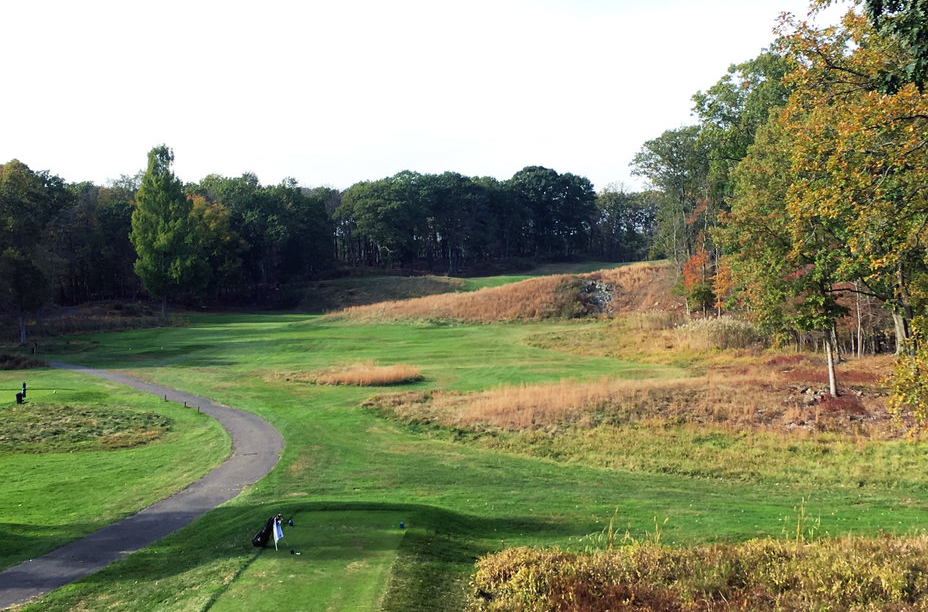
A shot up the left hand side (yellow line) hands a poor angle and blind shot over the left mound that makes for a much more difficult layup. One of the hole’s more subtle features is the diagonal fairway. The left side allows shorter players a safe route while penalizing longer players who play safe.
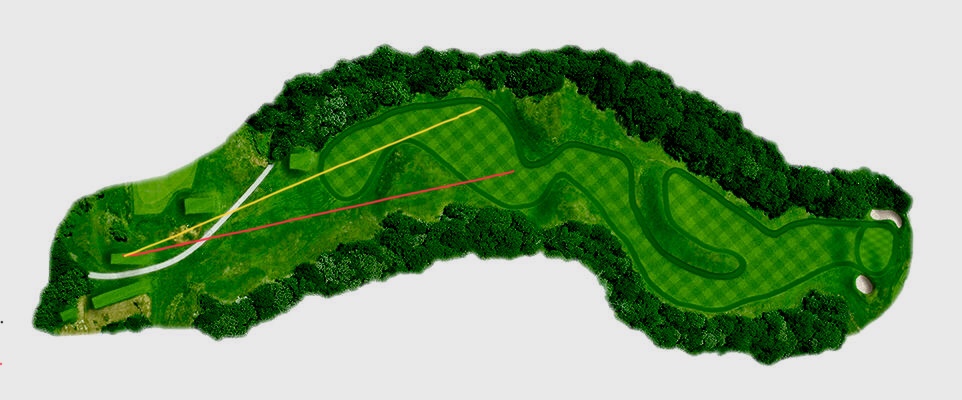
The Second Shot
The second shot on “Home” bring about more options for players.
The bold tee shot pays dividends with a straight on look and a clear direction on where to play the second shot. Longer hitters have the opportunity to advance the ball beyond the hill and reap the reward of a much shorter approach.
A safe tee shot leaves the option of playing a lofted club over the left mound to the upper fairway, or play a longer club to the lower fairway. Playing to the upper fairway carries more risk but yields a better angle and a view of the green. Shots to the lower fairway are safer but leave a blind shot with a worse angle.
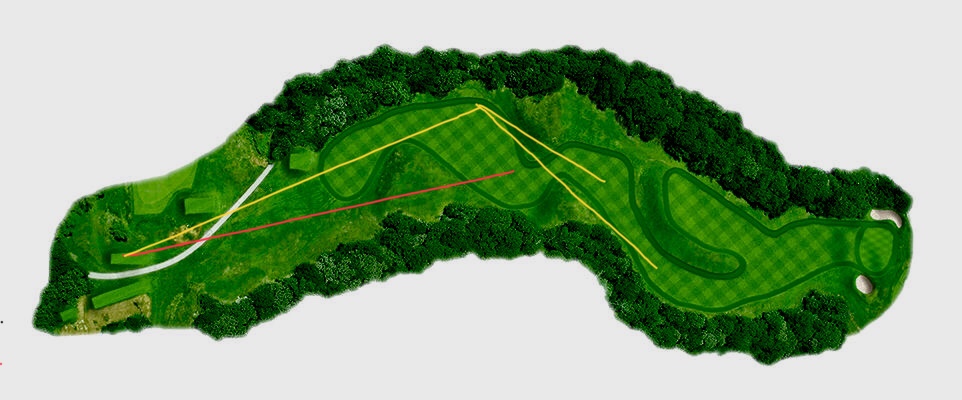
Approaching the green
Two bold shots will offer a beautiful view – an undisrupted look at the green from a great angle. The shot from the top of the hill plays about 25 yards downhill and begs for a running shot into the massive green.
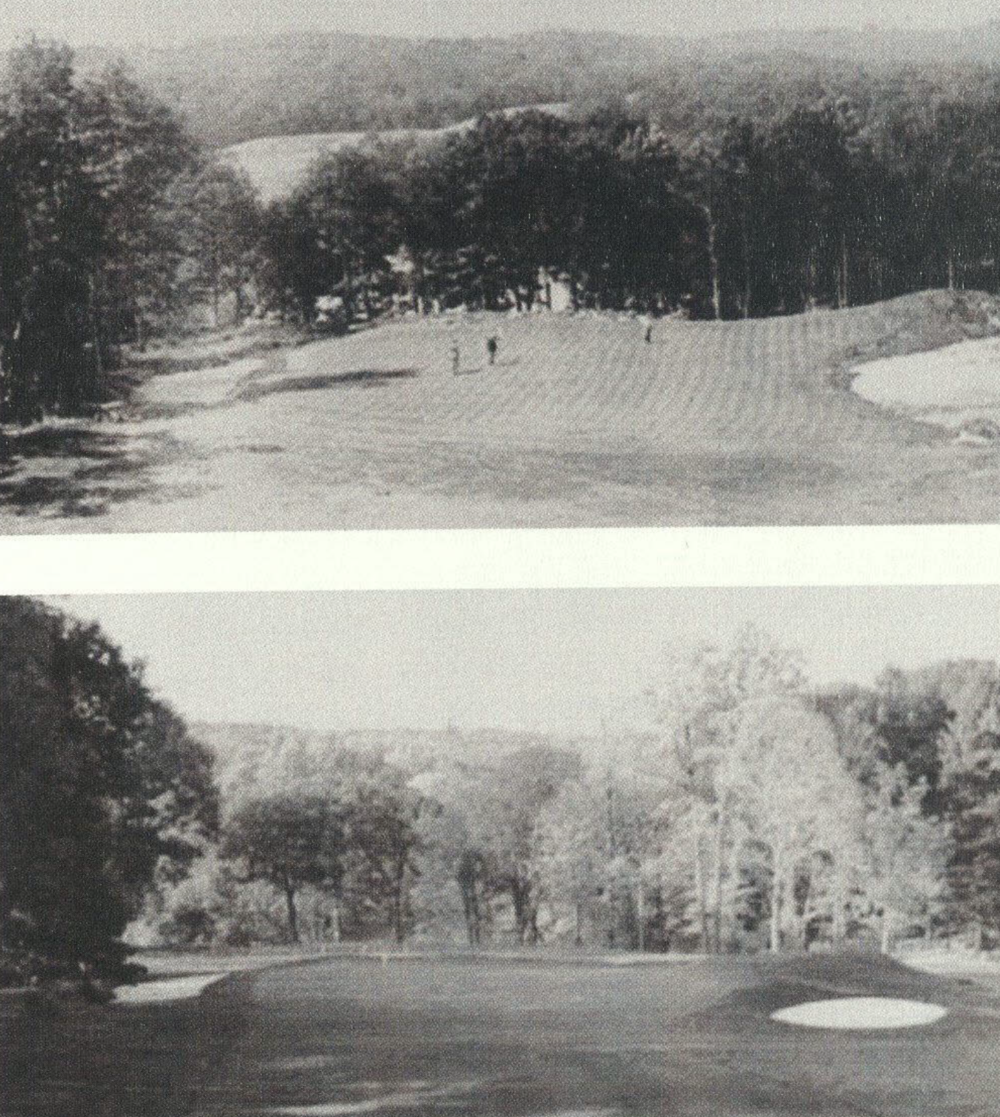
Early photos of the 18th green illustrate how quickly it shrunk from Raynor's original - Photo Credit: Geoffrey Childs
A second to the lower fairway will hand the player their third straight blind shot. The approach plays a little less than the yardage states, and allows for a shot to be played short and chased on.
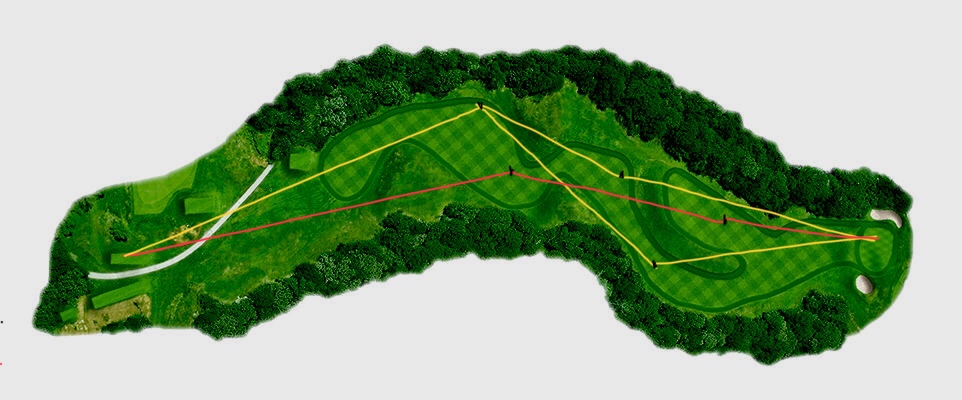
The combination of options, strategy, recovery and penalty are what make this one of my favorite closing holes of all time. It asks players to weigh their options on every shot. C.B. MacDonald referred to Yale as a “veritable wilderness.” The 18th concludes an expedition through unmatched scale and strategy, acting as the perfect final piece of Yale’s puzzle of intrigue and drama.


 by
by 
